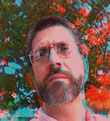|
|
This topic comprises 2 pages: 1 2
|
|
Author
|
Topic: Color temp drift on aging Xenon bulbs?
|
|
|
|
|
|
|
|
|
Paul Mayer
Oh get out of it Melvin, before it pulls you under!

Posts: 3836
From: Albuquerque, NM
Registered: Feb 2000
|
 posted 02-16-2001 10:45 PM
posted 02-16-2001 10:45 PM





I asked that question to some engineers at ORC a few years ago. Their answer was that color temperature does not vary over either the life of a xenon bulb nor over the operating current range. Bulbs do get darker as they age or if you reduce current, but they do not change color if they are operating normally (color temp could change if the bulb quartz itself becomes blackened for some reason).Differences in color between various lamphouses are caused mostly by the reflectors, heat shields, or other components in the optical path. Dichroic coatings and the like certainly do age and can affect color temperature when they do. Regarding your specific question, were you able to obtain a 6500K reading at any IRE level? If you were, but getting 5100K at 30 and 80, you have some gray-scale tracking issues to deal with. In a machine meant for professional use, there should be enough range in the RGB gain, gamma, and black level controls to achieve a consistent color temperature reading at any level from near 0 to 100 IRE. If your color temp "curve" was fairly smooth, adjustment of these controls may yield improved results. If your curve had some notches in it, that would indicate aging or dirt problems somewhere in the optical path. How smooth was your curve?
|
|
|
|
|
|
|
|
|
|
|
|
John Pytlak
Film God

Posts: 9987
From: Rochester, NY 14650-1922
Registered: Jan 2000
|
 posted 02-17-2001 12:59 PM
posted 02-17-2001 12:59 PM





Remember, that in a 3-chip DLP projector, the light goes through dichroic prisms to separate it into red, green and blue portions of the spectrum to be modulated by the DMD chips, and then recombined into "white" light. So the "color temperature" is not only a function of the lamp, but of all the optics involved.As Paul Mayer notes, gray scale "tracking" is important for any electronic display, to avoid having a color shift as you go from highlights to shadows. The absolute color temperature is not as critical as good gray scale tracking, since the eye will quickly adapt to minor variations in overall color temperature. FWIW, "daylight" is approximately 5500 degrees Kelvin, and is a mix of sunlight and bluer "skylight". I suspect human vision has evolved optimized for daylight. Xenon and carbon arc lamps provide light that closely approximates daylight. ------------------
John P. Pytlak, Senior Technical Specialist
Worldwide Technical Services, Entertainment Imaging
Eastman Kodak Company
Research Labs, Building 69, Room 7419
Rochester, New York, 14650-1922 USA
Tel: 716-477-5325 Cell: 716-781-4036 Fax: 716-722-7243
E-Mail: john.pytlak@kodak.com
Web site: http://www.kodak.com/go/motion
|
|
|
|
|
|
|
|
|
|
|
|
All times are Central (GMT -6:00)
|
This topic comprises 2 pages: 1 2
|
Powered by Infopop Corporation
UBB.classicTM
6.3.1.2
The Film-Tech Forums are designed for various members related to the cinema industry to express their opinions, viewpoints and testimonials on various products, services and events based upon speculation, personal knowledge and factual information through use, therefore all views represented here allow no liability upon the publishers of this web site and the owners of said views assume no liability for any ill will resulting from these postings. The posts made here are for educational as well as entertainment purposes and as such anyone viewing this portion of the website must accept these views as statements of the author of that opinion
and agrees to release the authors from any and all liability.
|

 Home
Home
 Products
Products
 Store
Store
 Forum
Forum
 Warehouse
Warehouse
 Contact Us
Contact Us




 Printer-friendly view of this topic
Printer-friendly view of this topic






 I hadn't thought of that. But even so, since the light has to pass through 3 panels anyway, mustn't that have been factored into the 6500K preset? I'm getting my new bulb on Tuesday, but I'm curious if I should expect a higher color temp. The Vista Pro doesn't allow the end user to adjust the color temperature without the service codes and I don't have them.
I hadn't thought of that. But even so, since the light has to pass through 3 panels anyway, mustn't that have been factored into the 6500K preset? I'm getting my new bulb on Tuesday, but I'm curious if I should expect a higher color temp. The Vista Pro doesn't allow the end user to adjust the color temperature without the service codes and I don't have them.






 ). I don't know the characteristic gamma of DLP or D-ILA imagers or their drive circuits, but I would think that they have fewer problems than CRTs in this respect. It'll be interesting to see the results you get after the new lamp is in place and you've had a chance to play with the various RGB settings.
). I don't know the characteristic gamma of DLP or D-ILA imagers or their drive circuits, but I would think that they have fewer problems than CRTs in this respect. It'll be interesting to see the results you get after the new lamp is in place and you've had a chance to play with the various RGB settings. I got an LED error message that warned of "DMD lamp failure". I removed and reseated the bulb several times. Same message. I replaced the original bulb. Same message. Christie Digital tech support says it sounds like I need a new lamp ballast. They told me that this is what happens when someone doesn't replace the bulbs in a timely fashion, but uses the bulbs way past what's recommended (I recently bought the projector "as is"). The new bulb uses more voltage and the "shock" to the lamp ballast causes the failure. I hope I haven't mis-stated his explanation. I'm not a happy camper, but at least it can be fixed. I would appreciate anyone's opinion, if they care to offer it.
I got an LED error message that warned of "DMD lamp failure". I removed and reseated the bulb several times. Same message. I replaced the original bulb. Same message. Christie Digital tech support says it sounds like I need a new lamp ballast. They told me that this is what happens when someone doesn't replace the bulbs in a timely fashion, but uses the bulbs way past what's recommended (I recently bought the projector "as is"). The new bulb uses more voltage and the "shock" to the lamp ballast causes the failure. I hope I haven't mis-stated his explanation. I'm not a happy camper, but at least it can be fixed. I would appreciate anyone's opinion, if they care to offer it.



